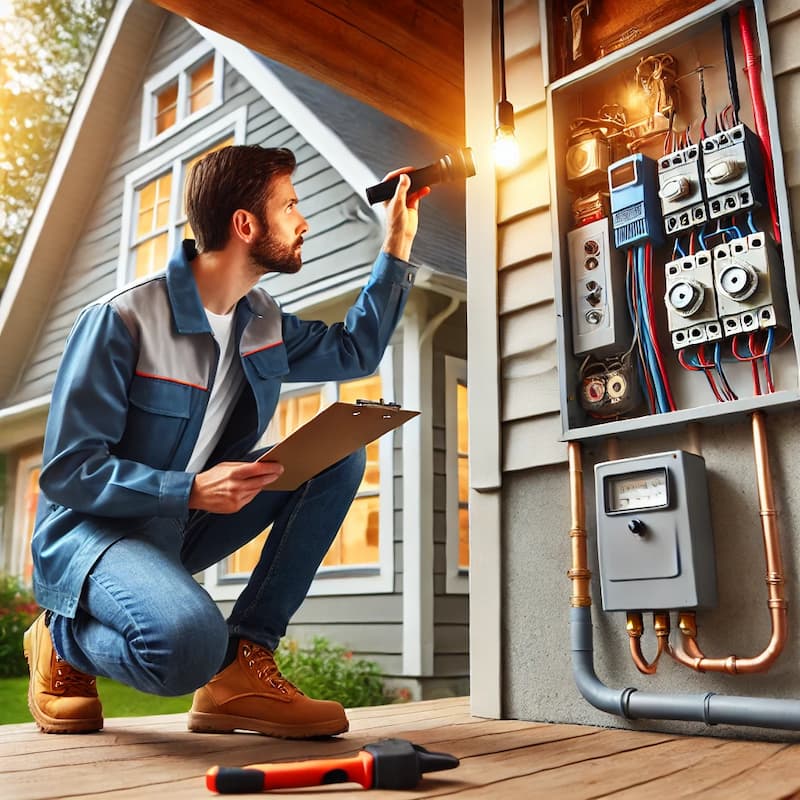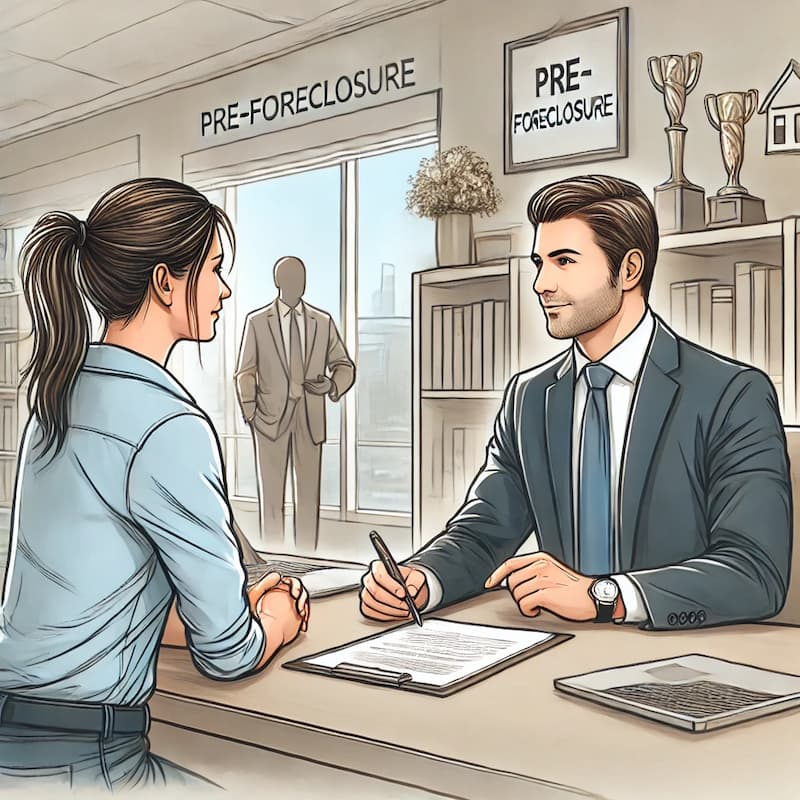Learn how to inspect your first home like a pro with Home Inspection Basics on checking structural elements, plumbing, electrical, and more.
Understanding the Home Inspection Process- Home Inspection Basics
The home inspection process is a crucial step in buying your first home. It helps you uncover potential issues and offers insight into the home’s overall condition. By hiring a certified home inspector, you’ll have an expert who checks essential systems and structures, ensuring you’re aware of any red flags before committing to a purchase. Preparation and understanding what the process entails can give you a confident start to homeownership.
Importance of a Home Inspection
A thorough home inspection can save you from costly surprises down the line. It identifies hidden defects, structural problems, and safety hazards that might not be visible during a casual walkthrough. This ensures you have all the facts before making one of the largest financial commitments of your life.
Key Roles of a Home Inspector
A home inspector’s job is to conduct an in-depth examination of your potential new home. They check structural elements, systems like plumbing and electrical, and safety measures. Understanding their role helps you know what to expect and how their findings impact your purchase negotiations.
Preparing for the Inspection
Preparation is key for a productive inspection. Make sure utilities are turned on so the inspector can test appliances and systems. Being present during the inspection is beneficial, as you can ask questions and receive on-the-spot explanations for any findings.
Structural Elements to Check- Home Inspection Basics
The structural integrity of a home is paramount when conducting an inspection. It serves as the skeleton of your new house, and any issues here can lead to major headaches down the line. From the foundation up to the roof, a comprehensive examination ensures you’re not walking into hidden structural problems that can impact the value and safety of your home.
Foundation and Basement Issues
Inspecting the foundation is crucial, as any cracks, uneven floors, or signs of water intrusion can indicate serious underlying problems. Check for visible cracks both inside and outside, and look for any signs of moisture or mold in the basement. These can be warning signs of potential structural instability or water drainage issues.
Roof Condition and Leaks
Your home’s roof protects everything beneath it, so inspecting its condition is vital. Look for missing or damaged shingles, sagging areas, and any signs of water damage in the attic or ceilings below. Identifying roof issues upfront can prevent leaks and costly repairs in the future.
Walls, Ceilings, and Floors Integrity
Check for cracks, uneven surfaces, or signs of settling in the walls, ceilings, and floors. These can be indicative of structural shifts, moisture damage, or foundational problems. Pay close attention to areas around doors and windows, as shifting foundations often cause them to misalign.
Plumbing System Review- Home Inspection Basics
The plumbing system is a critical component of any home and needs careful examination during your inspection. Plumbing issues can lead to costly repairs and water damage if left unaddressed. A thorough check ensures that the water systems in your new home are efficient and free from major defects.
Checking Water Pressure and Pipes
Start by testing the water pressure in the home’s faucets and showers. Low water pressure might indicate blockages or issues with the pipes. Additionally, inspect the visible pipes for signs of corrosion, leaks, or poor repairs. Outdated or damaged pipes can lead to leaks, mold growth, and costly replacements.
Potential Water Damage Signs
Look for water stains, discoloration, or warped surfaces in ceilings, walls, and floors. These could indicate past or present water damage from leaking pipes, roof issues, or flooding. Moisture detectors and infrared cameras used by inspectors can help identify hidden moisture pockets not visible to the naked eye.
Sewer and Drainage Systems
Inspecting the home’s sewer and drainage systems is equally important. A slow or clogged drain could indicate a more severe problem with the main sewer line. If your inspector recommends a video sewer inspection, it’s a worthwhile investment to avoid potential major plumbing issues in the future.
Electrical System Essentials- Home Inspection Basics
The electrical system of a home plays a vital role in ensuring safety and functionality. Faulty wiring or outdated systems can pose serious safety hazards and increase your energy bills. A comprehensive inspection of the electrical setup can uncover hidden dangers and give you peace of mind.
Outdated Wiring Concerns
Inspect the wiring throughout the home to determine if it meets modern standards. Outdated wiring, such as knob-and-tube or aluminum wiring, can be hazardous and may need replacement. Be on the lookout for signs of wear, such as exposed wires or scorch marks around outlets, as they can indicate overheating issues.
Circuit Breaker and Electrical Panel
Ensure that the home’s electrical panel is up to code and has enough capacity for your electrical needs. Look for a properly labeled and accessible circuit breaker panel. Overloaded panels, rust, or a lack of ground fault circuit interrupters (GFCIs) in wet areas like kitchens and bathrooms can be red flags for potential electrical problems.
Testing Outlets and Switches
During the inspection, each outlet and switch should be tested for proper functionality. Inspect for grounded outlets, as well as any dead outlets or switches that could signal underlying wiring issues. Faulty connections can be signs of a larger electrical system problem that needs immediate attention.
HVAC System Assessment- Home Inspection Basics
The heating, ventilation, and air conditioning (HVAC) system is essential for maintaining a comfortable living environment. Proper functioning of the HVAC system not only ensures comfort but also affects energy efficiency and long-term operational costs. During your inspection, make sure to thoroughly assess this critical system.
Heating and Cooling Functionality
Test the furnace, air conditioning, and any other temperature control systems. Ensure they heat and cool effectively and respond promptly to thermostat changes. Inspect for strange noises, uneven air distribution, or noticeable temperature differences within the house, which could indicate underlying issues.
Thermostat and Energy Efficiency
The thermostat is a crucial component for maintaining energy efficiency. Check if the thermostat works correctly and if it is programmable, as this can help reduce energy costs. An outdated thermostat may lead to inefficient system operation and higher utility bills.
Signs of Wear and Aging Systems
Inspect the age and condition of the HVAC unit. Units approaching the end of their lifespan may need expensive repairs or replacement soon. Look for visible wear, rust, or poorly maintained components, which can indicate inadequate upkeep and potential issues down the road.
Safety Hazards to Note – Home Inspection Basics
Identifying safety hazards during your home inspection is crucial for protecting your health and well-being. Many homes, particularly older ones, may have hidden dangers that can pose serious risks to you and your family. An inspection focused on safety ensures that these issues are identified and addressed.
Presence of Mold or Mildew
Mold and mildew thrive in damp, poorly ventilated areas. Inspect basements, bathrooms, attics, and areas prone to moisture for any signs of mold growth. Mold can cause health issues and point to a larger moisture problem in the home. Proper testing and remediation may be necessary if mold is present.
Carbon Monoxide and Smoke Detectors
Check that carbon monoxide detectors and smoke alarms are installed in appropriate locations throughout the home and are fully functional. Faulty or missing detectors put your household at serious risk, and bringing them up to code is essential for safety compliance.
Asbestos, Lead Paint, and Radon
Older homes might contain hazardous materials like asbestos, lead-based paint, or radon. These pose significant health risks if left unaddressed. Ask your inspector about testing options for these substances, and be aware of any remediation costs that may arise should they be present.
Conclusion – Home Inspection Basics
Choosing to inspect your first home like a pro ensures that you move into a safe, secure, and well-functioning space. By focusing on crucial areas such as the structural integrity, plumbing, electrical systems, HVAC, and potential safety hazards, you protect yourself from costly surprises and ensure your investment is sound. With Jeremy Torres Real Estate, you receive expert guidance every step of the way, making your journey to homeownership smooth and stress-free.
When you’re ready to make your dream home a reality, trust in Jeremy Torres to be your dedicated partner every step of the way. For insights and experiences from our satisfied clients, check out Jeremy Torres’ Reviews.
FAQs
Q: What should I expect during my first home inspection?
A: Expect a detailed examination of the home’s structural elements, major systems, and potential safety hazards. Your inspector will walk you through their findings and provide a comprehensive report.
Q: How can I tell if the plumbing system is in good shape?
A: Look for consistent water pressure, absence of leaks, and pipes free from corrosion. Signs of water damage or slow drainage may indicate plumbing problems.
Q: Why is it important to inspect the electrical system?
A: Electrical issues can be hazardous, potentially causing fires or electrical shocks. Inspecting for outdated wiring, proper grounding, and functional circuit breakers ensures safety and compliance with modern standards.
Q: What are some red flags during an HVAC inspection?
A: Watch for uneven heating or cooling, outdated thermostats, unusual noises, or visible rust. These could signal problems requiring repairs or replacements.
Q: How do I address mold and mildew found during an inspection?
A: If mold or mildew is detected, consult with a professional for proper testing and remediation. Addressing moisture sources, such as leaks, is essential to prevent future growth.








